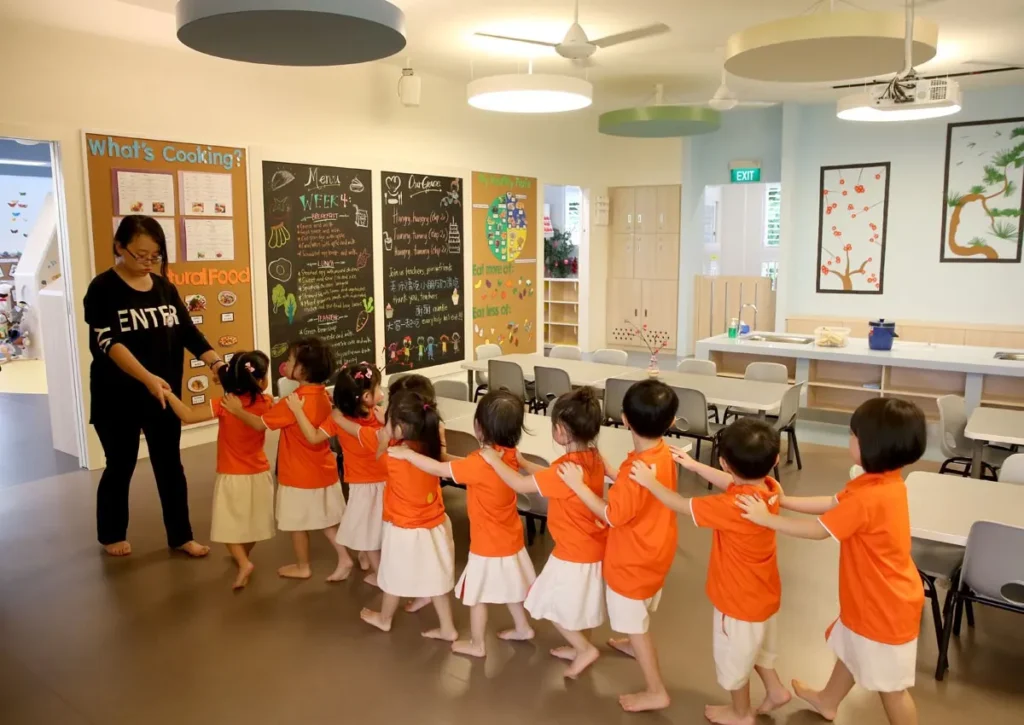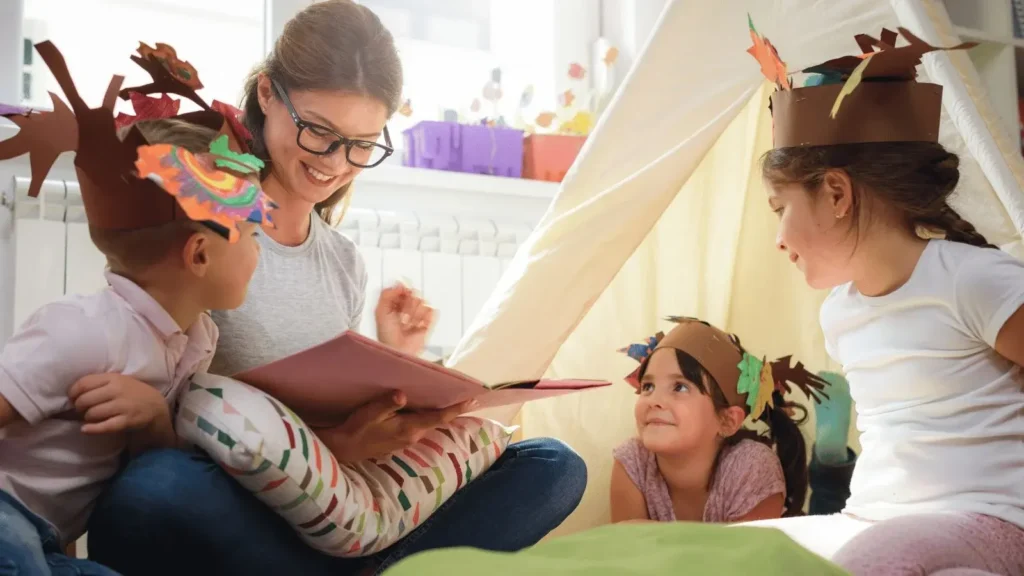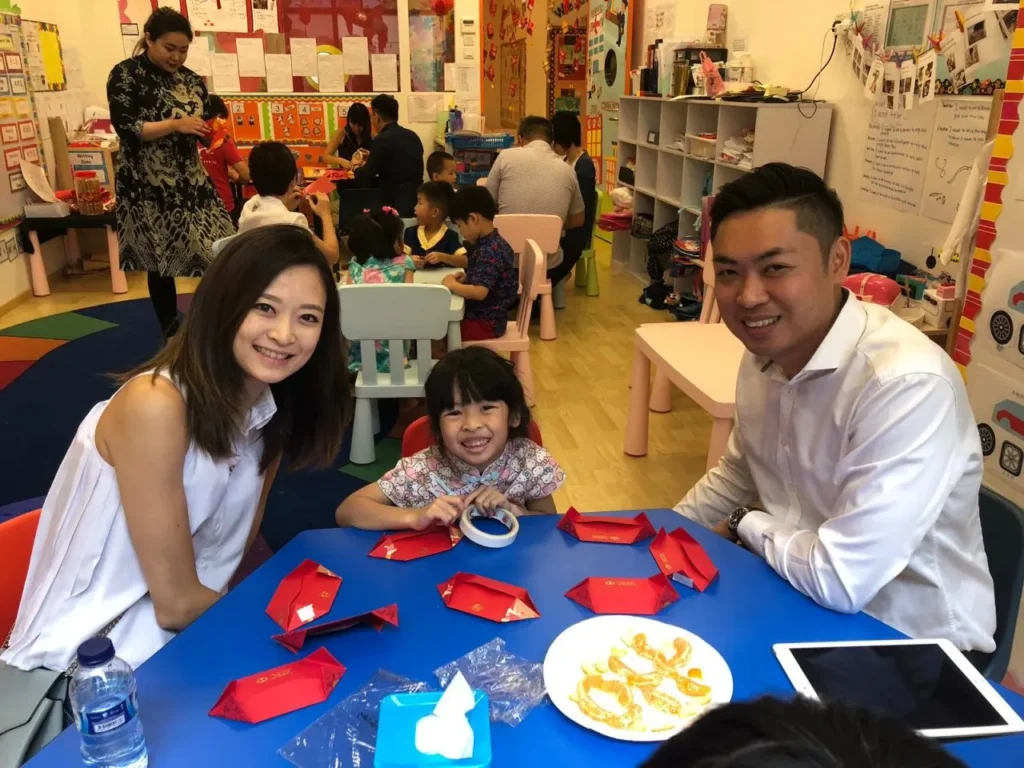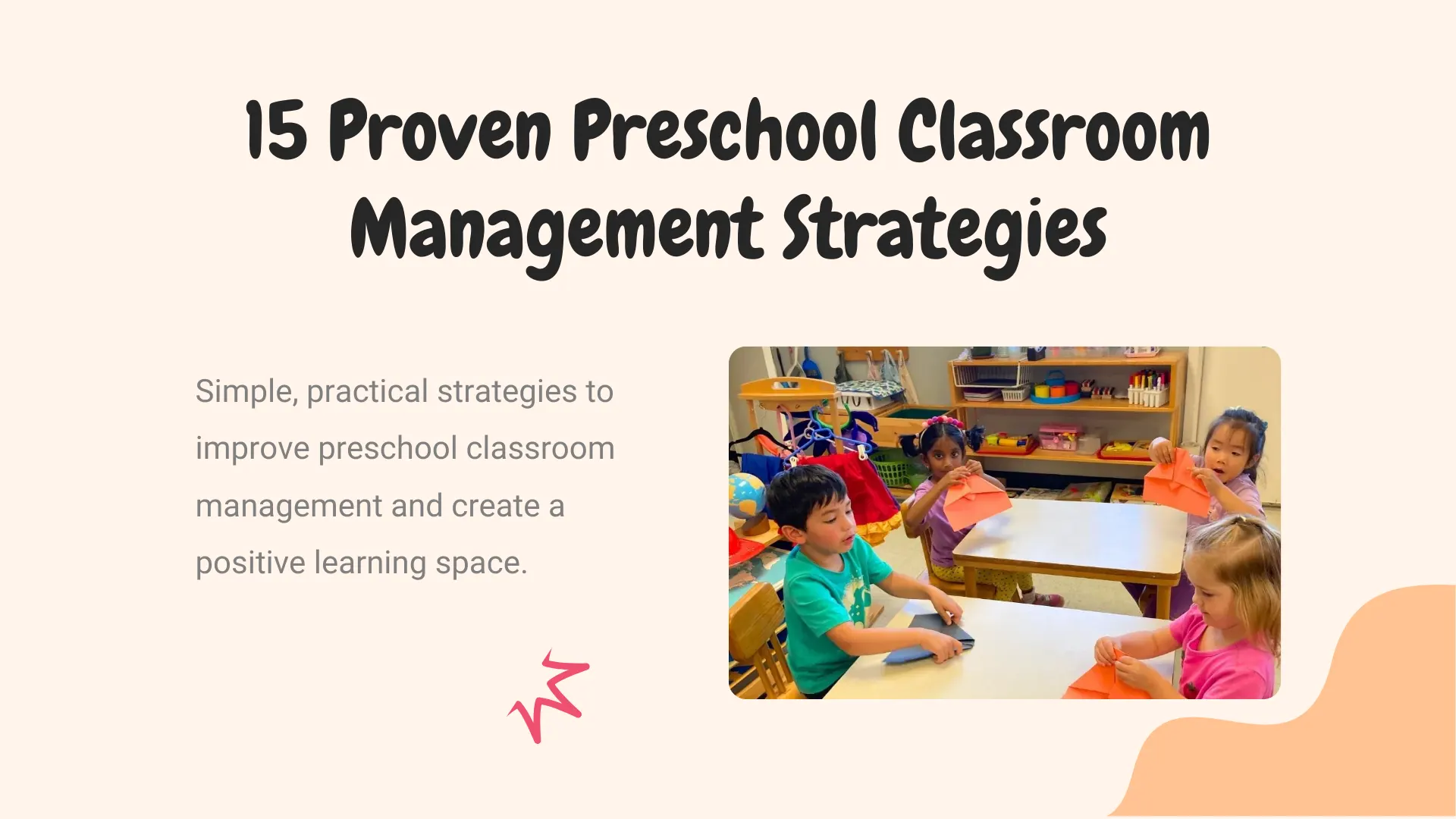Have you ever wondered why some preschool classrooms feel calm, joyful, and full of learning, while others seem chaotic and stressful? Do you struggle with short attention spans, constant transitions, or disruptive behavior from little learners? Are you looking for simple yet effective ways to build structure, encourage cooperation, and foster curiosity in your preschool or daycare classroom?
The truth is, effective preschool classroom management is the key to turning challenges into opportunities for growth. With the right strategies, teachers can handle behavior management for preschoolers, create consistent routines, and build an environment where children feel safe, respected, and eager to participate. Whether you’re dealing with early childhood classroom management struggles, seeking preschool classroom management tips, or aiming to strengthen behavior strategies for preschoolers, the solutions often lie in proven, easy-to-implement techniques that have been tested in real classrooms.
In this article, we’ll walk through 15 proven preschool classroom management strategies designed to minimize disruptions, boost engagement, and create a positive learning environment where every child can thrive.

Set Clear Rules and Expectations
Clear rules are the foundation of effective preschool classroom management. Children thrive when expectations are simple, positive, and consistent. Instead of long lists, focus on a few easy-to-follow rules such as “Be kind,” “Listen when others speak,” atau “Take turns.” Adding pictures or symbols alongside the words makes it easier for preschoolers to understand, especially for non-readers or children with different language backgrounds.
Rules need to be more than words on the wall. In classroom management for preschool, teachers should model the behavior, practice it with the children, and reinforce it daily through gentle reminders and positive feedback. Saying “I like how you used walking feet inside” helps children connect their actions with the classroom expectations.
For more detailed ideas and examples, see my full guide on Aturan Kelas Prasekolah. Setting expectations early and teaching them consistently creates a structured environment where children feel safe and ready to learn.
Establish Consistent Routines
A well-structured day is at the heart of successful preschool classroom management. Routines provide children with a sense of safety and predictability, which reduces anxiety and helps them focus on learning. Simple patterns like starting the day with circle time, cleaning up after activities, and ending with a goodbye song make the classroom feel calm and organized.
In early childhood classroom management, consistency is key. When children know what comes next, they are less likely to resist transitions or act out. Teachers can use visual schedules, picture cards, or even simple hand signals to guide the flow of the day. These cues help children anticipate what’s happening and prepare for the next activity without stress.
Strong routines also support behavior management in preschool by minimizing downtime and keeping students engaged. For example, if cleanup time always follows playtime, children quickly learn what’s expected. Over time, these habits build independence and self-control, making classroom management for preschool smoother and less demanding. For more practical ideas, check out my detailed guide on Preschool Daily Routines to see how structured schedules can transform your classroom.
Handle Activity Changes Smoothly
Activity changes are one of the most delicate parts of preschool classroom management. When children shift from play to group time or from indoors to outdoors, they can easily become restless if the process feels rushed or unclear. Smooth guidance during these moments prevents chaos and helps the day flow naturally.
In prek classroom management, preparation is the teacher’s best tool. Instead of sudden interruptions, give children advance notice with a calm reminder or a clear signal. A simple phrase like “Five more minutes of play, then we’ll meet on the carpet” gives them time to adjust. This gradual approach makes changes less stressful and encourages cooperation.
Well-managed activity changes also cut down on lost time. Keeping transitions short and purposeful reduces waiting, which is often when behavior issues arise. By staying consistent and calm, teachers maintain momentum and create a learning environment where children feel secure and supported—an essential part of classroom management in early childhood education.
Use Positive Language and Reinforcement
Words shape how children see themselves and the classroom. In preschool classroom management, using positive language helps guide behavior without creating fear or shame. Instead of saying “Don’t run,” teachers can reframe it as “Let’s use walking feet.” This simple shift tells children what to do, not just what to avoid.
Reinforcement is just as important. In behavior management for preschoolers, praise and recognition motivate children to repeat good behaviors. Specific comments like “You worked hard to share your toys” are far more effective than a general “Good job.” Over time, these acknowledgments encourage cooperation and build confidence.
Differentiate Discipline from Punishment
One of the most important aspects of preschool classroom management is understanding the difference between discipline and punishment. Discipline teaches children boundaries and helps them connect actions with consequences, while punishment often focuses only on the mistake without guiding future behavior.
In behavior management in preschool, effective discipline is proactive. For example, if a child grabs a toy, instead of sending them to the corner, a teacher might guide them to practice asking politely and waiting for their turn. This approach reinforces the right skill instead of simply highlighting the wrong action.
Punishment may stop behavior in the moment, but it rarely builds long-term self-control. Discipline, on the other hand, supports children’s growth, builds trust, and strengthens classroom management strategies for preschool. By choosing discipline over punishment, teachers create a safe environment where children learn responsibility with respect and care.
Build Strong Teacher-Student Relationships
Strong relationships are the foundation of effective preschool classroom management. When children feel safe, valued, and connected to their teacher, they are more likely to cooperate, follow directions, and engage in learning activities. Trust reduces power struggles and sets the stage for positive interactions.
In early childhood classroom management, building relationships goes beyond academics. Teachers can spend time learning about each child’s interests, personality, and background. Simple gestures such as greeting children by name, listening attentively to their stories, or celebrating small successes strengthen bonds and foster respect.
Relationships also play a vital role in behavior management for preschoolers. A child who feels understood is less likely to act out for attention. Instead, they seek connection in positive ways. By investing in genuine relationships, teachers create a classroom culture where cooperation feels natural, making classroom management in early childhood education smoother and more meaningful.

Encourage Emotional Expression and Empathy
Emotions are a big part of daily life in preschool, and teaching children how to manage them is a key element of preschool classroom management. When students can name their feelings and express them in healthy ways, they are less likely to resort to disruptive behavior.
In behavior management for preschoolers, teachers can model emotional expression by using simple phrases such as “I feel frustrated because the blocks fell down.” This shows children that emotions are normal and can be handled calmly. Providing tools like emotion cards or a “feelings chart” also helps children communicate without acting out.
Encouraging empathy is just as important. In classroom management in early childhood education, guiding children to consider how their actions affect others builds kindness and cooperation. Asking questions like “How do you think your friend feels when you take their toy?” helps children connect behavior with impact. Over time, empathy strengthens relationships and reduces conflicts, making the classroom a more supportive space for everyone.
Structure the Classroom for Success
The physical setup of a classroom has a big influence on preschool classroom management. A well-organized environment helps children focus, move safely, and engage in learning without unnecessary distractions. When materials and spaces are arranged thoughtfully, the classroom naturally supports positive behavior.
In classroom management for preschool, teachers can structure the room by creating clear learning areas such as a reading corner, art station, and building zone. Defined spaces reduce confusion and give children a sense of purpose when choosing activities. Keeping pathways open also prevents crowding and conflicts.
Organization matters too. In early childhood classroom management, shelves should be low, labeled, and easy to access so children can find and return materials independently. Choosing the right furniture is also important. Durable, child-sized tables, chairs, and storage solutions make routines smoother and support independence. For ideas on how to set up your classroom with practical and safe furniture, visit our collection of preschool classroom furniture.
Kirimkan pesan kepada kami jika Anda memiliki pertanyaan atau meminta penawaran harga. Pakar kami akan membalas Anda dalam waktu 48 jam dan membantu Anda memilih produk yang tepat sesuai keinginan.
Manage Classroom Supplies and Materials
Keeping supplies organized is a simple but powerful part of preschool classroom management. When materials are easy to find and put away, children stay focused on learning instead of getting distracted by clutter or waiting for the teacher to help. An orderly classroom also encourages independence and responsibility.
In daycare classroom management, one effective approach is to use labeled bins or clear containers for different items such as crayons, blocks, and puzzles. Placing supplies on low shelves makes them accessible, allowing children to choose and return materials on their own. This practice not only saves time but also strengthens self-management skills.
Well-managed materials also reduce conflict. In behavior management in preschool, arguments often start when children can’t share or access resources. With clear organization and enough sets of popular items, these issues become less frequent. To make classroom organization easier, explore our range of storage solutions for preschool classrooms designed to keep learning materials tidy and accessible.
Foster Engagement and Active Learning
Children learn best when they are actively involved. In preschool classroom management, keeping students engaged reduces behavior problems and makes the classroom more enjoyable for everyone.
One effective strategy in classroom management strategies for preschool is to provide hands-on, interactive activities. Learning centers such as art, science, and dramatic play give children opportunities to explore, while group projects and movement games keep their attention and energy focused in positive ways.
Engagement also plays a key role in behavior management for preschoolers. When children are curious and busy, they are less likely to become disruptive. Offering choices, asking open-ended questions, and connecting lessons to real-life experiences helps sustain interest. Active learning not only supports academic growth but also creates a cooperative, well-managed classroom environment.
Provide Responsibilities and Classroom Jobs
Assigning classroom jobs is a simple but powerful way to create a sense of community. When children help with tasks like passing out materials, watering plants, or leading the line, they feel trusted and important. These small roles give structure to the day and encourage cooperation.
Responsibilities also build independence. By taking care of their classroom, children learn that their actions matter and that they can contribute in positive ways. Even the youngest learners benefit from having a role, no matter how small.
For practical examples of age-appropriate jobs, check out this guide on Preschool Classroom Jobs. Introducing responsibilities not only lightens the teacher’s load but also fosters responsibility, teamwork, and pride among students.
Adapt to Individual Needs
Every child learns and behaves differently, which makes flexibility an important part of preschool classroom management. Some children may need extra time to adjust to routines, while others might require more movement or sensory breaks to stay focused.
Teachers can adapt by offering different ways to engage with the same activity. For example, a child who struggles with sitting still can participate in a standing station, while another who needs quiet can use a calm space with minimal distractions. These small adjustments show children that their needs are understood and respected.
Adapting to individual needs also supports fairness in the classroom. Instead of holding every child to the exact same standard, teachers provide the right level of support to help each student succeed. This approach creates an inclusive environment where all children feel valued and capable.

Involve Parents as Partners
Family involvement is an essential part of effective preschool classroom management. When parents and teachers communicate regularly, children receive consistent messages about expectations and behavior both at school and at home. This consistency helps children feel secure and supported.
Teachers can build strong partnerships by sharing updates on progress, celebrating successes, and discussing challenges early. Simple tools like weekly newsletters, daily notes, or brief check-ins at drop-off and pick-up can strengthen trust and keep families engaged.
Working with parents also creates a sense of teamwork. When families feel included, they are more likely to reinforce classroom routines and behavior strategies at home. This collaboration not only benefits the child but also makes the classroom a more positive and cooperative environment for everyone.
Demonstrate Enthusiasm and Model Behavior
Children learn as much from what teachers do as from what they say. In preschool classroom management, modeling the right behavior is one of the most effective strategies. When teachers consistently show respect, patience, and kindness, children are more likely to mirror those same actions.
Enthusiasm is just as powerful. A teacher who greets the class with energy, shows excitement during lessons, and responds positively to challenges sets a tone for the entire classroom. This energy encourages children to participate and creates a joyful learning environment.
By combining positive modeling with genuine enthusiasm, teachers create a culture where good behavior and curiosity come naturally. This approach strengthens classroom management for preschool while also making learning more engaging and enjoyable for young children.
Encourage Feedback and Continuous Improvement
Effective preschool classroom management is not a one-time effort but an ongoing process. Every group of children is different, and what works one year may need adjusting the next. Seeking feedback and reflecting on practices helps teachers grow and adapt.
Feedback can come from many sources. Parents may share helpful insights about their child’s needs, and colleagues can suggest new ideas or approaches. Even preschoolers themselves can provide clues through their reactions and behaviors. Paying attention to these signals helps teachers refine strategies and improve the classroom experience.
Continuous improvement ensures that the classroom remains a supportive and engaging space. By staying open to new ideas, trying fresh approaches, and making small adjustments, teachers strengthen their management skills over time. This commitment to growth benefits both the educator and the children, creating a positive learning environment that evolves with the needs of the class.
Kesimpulan
- Preschool classroom management is not about strict control, but about creating an environment where children feel safe and supported.
- When teachers use thoughtful strategies consistently, classrooms become calmer, more joyful, and better suited for learning.
- Strong management benefits everyone: children grow in independence, families see progress, and teachers enjoy a more rewarding teaching experience.




